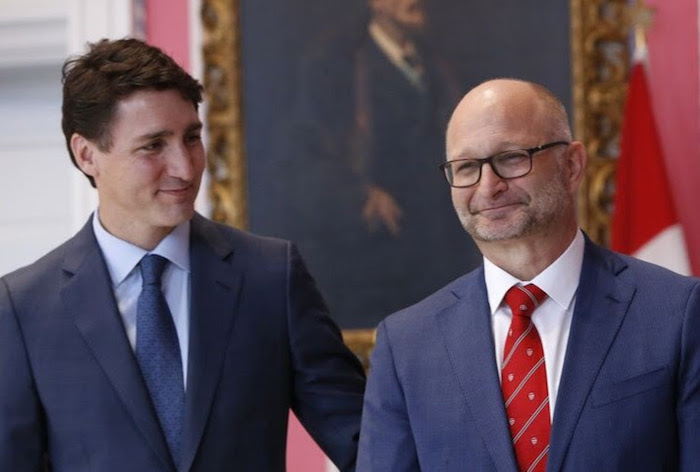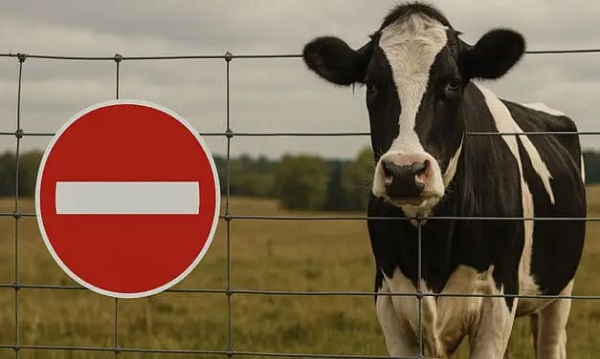Frontier Centre for Public Policy
“Indian Industry” cronyism

From the Frontier Centre for Public Policy
So, if the huge marginalized and dependent indigenous underclass does not benefit from all that money that changes hands inside the Indian Industry who is benefiting?
Former Justice Minister David Lametti’s departure from government and immediate acceptance into an expensive law firm that makes millions from indigenous issues is a recent example of what has long been called “The Indian Industry” at work.
It is unknown who first coined the term “The Indian Industry.” Many indigenous and non-indigenous writers have used the term over the decades. Indigenous author, Calvin Helin made liberal use of the term in “Dances With Dependency” as did Cree writer, Harold Johnson, in “Firewater- How Alcohol is Killing My People”
However, it was Frances Widdowson and Albert Howard’s important 2009 book “Disrobing The Aboriginal Industry” that first examined the Indian Industry in detail.
The authors chose to use the term “Aboriginal Industry”, perhaps for reasons of politeness, but they are describing the Indian Industry. They tell in detail how extensive it has become in Canada. Entire universities, law firms and virtually all Canadian institutions have become largely dependent on the money sloshing around within it. Almost all of that money comes in one way or another from taxpayers.
But they note the supreme irony that the Indian Industry is not improving the lot of the very people it is supposed to be helping – Canada’s marginalized and dependent indigenous underclass:
“Despite the billions of dollars devoted to aboriginal causes, Native people in Canada continue to suffer all the symptoms of a marginalized existence – high rates of substance abuse, violence, poverty. Disrobing the Aboriginal Industry argues that the policies proposed to address these problems – land claims and self government – are in fact contributing to their entrenchment.”
However, “Disrobing” was written in 2009, and since the Trudeau Liberals took over in 2015 the money flowing into the Indian Industry has increased dramatically in volume. In fact, that money flow, and the enormous indigenous contingent liabilities that now total $76,000,000,000 are growing so quickly – seven times higher since Trudeau took over – that the parliamentary budget officer has raised the alarm. Canada’s economic future is being compromised.
It isn’t only indigenous contingent liabilities – money owed for indigenous claims – that have grown so alarmingly, it is all indigenous spending. Reports from the Fraser Institute keep track of the shocking increases in total indigenous spending since the Trudeau Liberals took power. It is fair to say that the truly frightening federal government deficits in recent years occurred largely because of this extra indigenous spending.
And it isn’t only the largesse of the Trudeau government that has dumped money into the Indian Industry. Since 2015 it has also been the residential school bonanza. Clever lobbyists have been able to extract tens of billions of dollars from taxpayers by making highly exaggerated claims that residential schools were places of horror, where priests tortured, murdered and secretly buried thousands of indigenous children. These claims are nonsense. Although it is completely true that the residential school system was deeply flawed, and that many indigenous children were badly hurt by their residential school experience, it is also true that many received educations they would otherwise have been denied. But, more to the point, there is no evidence that even one child was murdered, or secretly buried during the entire history of residential schools. Despite that, baseless claims of clandestine deaths and secret burials have worked very well for everyone involved in the Indian Industry. Residential schools have become the Indian Industry’s single biggest money earner.
But, as Widdowson and Howard noted years ago, the Indian Industry has done nothing to solve what has always been called Canada’s “Indian problem” – namely that the great majority of Canada’s indigenous people remain far behind the mainstream on every social indicator. They are the least healthy, worst educated, most incarcerated, shortest living of any demographic by far.
They were that way before 2015, and they remain that way now. The Indian Industry, and the astounding amounts of money poured into it since 2015 haven’t changed those depressing numbers one bit.
A recent CBC investigative report on the dismal conditions at the St. Theresa Point reserve in Manitoba is a case in point. It is one of Canada’s hundreds of totally dependent reserves. Families there of as many as 23 people per house live in dilapidated housing, in a community that is almost totally unemployed and dependent. The increased money flow since 2015 appears to have only made dependency and all of its related problems – addiction, crime, domestic violence – worse.
So, if the huge marginalized and dependent indigenous underclass does not benefit from all that money that changes hands inside the Indian Industry who is benefiting?
It is people like David Lametti and Perry Bellegarde, and their law firms, universities, etc. – none of whom need special help.
And here is the second irony: The Indian Industry feeds on the human misery on display at communities like St. Theresa Point.
It needs that misery to continue to keep the money flowing.
This is not to suggest that any of the people and institutions that are part of it are deliberately perpetuating poverty, or doing anything illegal. They aren’t. They are simply picking up all of the free money our elected representatives and courts throw into the Indian Industry every day. They pick it up because we put it there.
It is probably not fair to single out David Lametti and Perry Bellegarde for their participation in this obscene waste of taxpayer money that is the Indian Industry. They are just two of many enterprising such people who have come before them, and many who will come after them. They probably convince themselves that they are doing something useful. They aren’t. They are part of an Indian Industry that fleeces taxpayers, while pretending to be solving the indigenous underclass problem, while making it worse. At a certain point, will Canadians grow tired of this game?
Because it has become abundantly clear that the federal indigenous policy that has developed over decades is a total failure. While privileged indigenous people who don’t need special attention are benefitting spectacularly, the indigenous people who do need the help are becoming more helpless and dependent all the time. The huge increase in the money dumped into uneconomic communities, like St. Theresa Point, is making things worse, not better. It is keeping young people, who should be moving to job centres, trapped in hopeless communities.
Renowned American economist and philosopher Thomas Sowell argues convincingly that simply giving money to chronically dependent people makes things worse, not better. I’m sure that Mr. Lametti and Mr. Bellegarde don’t want that to happen, but it is. And it is the Indian Industry that is making them wealthy that is doing it.
At some point the entire Indian Industry, with its racist Indian Act and brutal reserve system, will come to an end. Indigenous people living on Indian reserves now comprise only 1% of the Canadian population. Despite high birth rates on reserves, more and more reserve residents are moving away from them. By most measures only 25-40% of status Indians now live on reserves, and that percentage steadily falls.
Meanwhile, immigrants are steadily flowing into Canada. According to some estimates, Canada might have a population of 100 million by the end of the century. The percentage of the population living on reserves will become far less than 1%. Maintaining a completely separate system and bureaucracy for one tiny segment of the population will make less and less sense – especially to those millions of new Canadians, who don’t feel that they owe any special debt to indigenous people.
But while this natural process works itself out, the Indian Industry, now armed with the deeply divisive United Nations Declaration on the Rights of Indigenous Peoples (UNDRIP), is doing permanent damage to the country. We see that process now playing out in British Columbia, where their provincial version of UNDRIP- DRIPA – is wreaking havoc on their natural resources industry. It has become not only a virtual indigenous veto on any mining, pipeline or development project, it is now directly threatening basic landowner rights. In what is much like Chicago during the days of the Mafia, indigenous leaders all demand their “cut” before any project can proceed. This harmful process is spreading all across Canada, now that Canada has foolishly adopted UNDRIP.
And, in what is a perfect illustration of how the Indian Industry works, Perry Bellegard, as AFN Grand Chief, lobbied the government to bring in UNDRIP, David Lamerti, as Justice Minister, brought it in, and now Bellegrde and Lametti and their law firm benefit from it financially. Meanwhile, the taxpayer pays, and the marginalized and dependent indigenous majority remains marginalized and dependent.
Isn’t it time to end this farce? People who need education, and assistance to move to job centres should get that help. But pretending that making privileged people like David Lametti and Perry Bellegarde wealthier by dumping endless amounts of cash into Indian Industry cronyism is somehow good for indigenous people is nuts.
It isn’t. It’s bad for them, and it’s bad for Canada.
Brian Giesbrecht, retired judge, is a Senior Fellow at the Frontier Centre for Public Policy.
Alberta
Too Graphic For A Press Conference But Fine For Kids In School?

From the Frontier Centre for Public Policy
By Lee Harding
Alberta moves to remove books after disturbing content, too graphic for media to view, was found in schools
Should elementary school children be given books to read with harsh insults against minorities, depictions of oral sex, and other disturbingly graphic and explicit content?
Such books have been in some Alberta elementary schools for a while, and in many school libraries across Canada.
In late May, the Alberta government announced it would establish new guidelines regarding age-appropriate materials in its schools. A government press release included quotes with disturbing content, but at a press conference, Education Minister Demetrios Nicolaides said some book illustrations could not be shown.
“I would show these images to all of you here and to the media, but they are too graphic for a live-stream media event. These examples … illustrate the kind of content that raises concerns amongst parents,” Nicolaides said.
You don’t say? This seems like the sort of stuff no one, except a pervert in a park, would dream of showing to a child. Ironically, the inability to publicize such graphic materials is part of the reason they have been shown to children with little public awareness.
Citizens’ group Action4Canada (A4C) has claimed its activism played a pivotal role in the Alberta decision. The organization has compiled a 36-page document online with examples of objectionable content in Canadian schools. Among the worst is Identical by Ellen Hopkins, which includes graphic descriptions of a little girl being molested by her father.
A4C founder Tanya Gaw has repeatedly tried to raise concerns about objectionable books with school boards, often without success. In some cases, she isn’t even allowed on the agenda if she states her topic upfront. When she is permitted to speak, she’s frequently cut off as soon as she begins quoting from the books, preventing the content from entering the public record.
In January 2023, Gaw made an online presentation to a school board in Mission, B.C. regarding materials in their schools. As she began to screenshare what was there, some board members objected, saying such permission had not been given in advance.
One month later, the board banned Action4Canada from making any further presentations. In later media interviews, the board chair justified the decision by saying Gaw’s PowerPoint contained some graphic and “inappropriate images.”
Exactly, and that is the problem. A recent check showed Mission’s school division only removed four of 15 books A4C objected to. Gaw is just glad “Identical” is one of them.
Pierre Barns, a father from Abbotsford, B.C., made it his mission to notify school boards across Canada what was on their school shelves. An online search was all it took to confirm. A “reply all” from a board member at the Halton School District in Ontario was most ironic.
“I am concerned. This individual has included links to publications and videos which may contain illegal content,” she wrote.
“I’m not sure how to investigate the content of the email safely. Would you please advise us whether or not this person ought to be reported to police? Is there some action we should take?”
There probably was action they should have taken, such as removing the books, but that never happened. Later, they defended a biologically male teacher in their school division who made international headlines by wearing large prosthetic breasts to school.
The Alberta government has committed to conducting public consultations before implementing new policies. It’s a good time for parents and citizens there and in other provinces to speak up. A young mind is a terrible thing to corrupt, but unfortunately, some schools are part of this corrosive effort.
Lee Harding is a research fellow with the Frontier Centre for Public Policy.
Economy
Canada Treats Energy As A Liability. The World Sees It As Power

From the Frontier Institute for Public Policy
Research VP Marco Navarro-Genie warns that Canada’s future hinges on building energy infrastructure, not just expanding pipelines but forging a true North American energy alliance. With global demand rising and authoritarian regimes weaponizing energy, Ottawa’s dithering costs Canada $70 million daily. Sovereignty isn’t secured by speeches but by infrastructure. Until Canada sheds its regulatory paralysis, it will remain a discount supplier in a high stakes geopolitical game. Time to build.
Canada has energy the world is begging for, but ideology and red tape are holding us back
As Prime Minister Mark Carney met with U.S. President Donald Trump recently, energy should have been the issue behind every headline, whether mentioned or not. Canada’s future as a sovereign, economically resilient country will depend in no small part on whether the country seizes this moment or stalls out again in a fog of regulatory inertia and political ambivalence. Canada holds an underleveraged strategic card: the potential to be the world’s most reliable democratic energy supplier. Recent trade figures show Chinese imports of Canadian crude hit a record 7.3 million barrels in March, a direct result of newly expanded access to the Pacific via the Trans Mountain Expansion (TMX), a federally owned pipeline project that now connects Alberta crude to global markets through British Columbia’s coast. But one pipeline does not make a national strategy. Demand in Asia is growing fast. India is among the hungriest, but Canada’s infrastructure is nowhere near meeting that demand.
This matters not just for Canada, but for the United States as well. In a world where energy markets are weaponized and strategic reserves manipulated by authoritarian regimes, the case for a coordinated North American energy alliance is stronger than ever. Such an alliance should not erode national sovereignty. It should reinforce it, allowing Canada, the U.S. and Mexico to insulate themselves collectively from supply shocks and geopolitical blackmail while projecting democratic strength abroad.
But for that alliance to work, Canada must be a credible partner, not merely a junior supplier shackled by Ottawa-induced internal bottlenecks. While the U.S. has leveraged its shale revolution, LNG capacity and permitting reforms to pursue energy dominance, Canada dithers. Projects languish. Investment flees. And meanwhile, Canadian oil continues to flow south at a steep discount, only to be refined and resold, often back to us or our trading partners, at full global prices.

Yes, you read that right. Canada’s oil and gas is sold at a discount to U.S. customers, and that discount costs Canada more than $70 million every single day. The Frontier Centre for Public Policy has developed a real-time tracker to monitor these losses. This pricing gap exists because Canada lacks sufficient pipeline infrastructure to access overseas buyers directly, forcing producers to sell to the U.S., often at below-market rates.
Such massive losses should be unacceptable to any government serious about economic growth, geopolitical influence or environmental integrity. Yet Ottawa continues to speak the language of ambition while legislating the mechanics of paralysis. Stephen Guilbault’s statement that Canada already has enough pipelines speaks to more paralysis..
Canada’s energy infrastructure challenges are not just economic; they are matters of national defence. No country can claim to be secure while relying on another’s pipelines to transport its energy across its own territory. No country can afford to leave its wealth-producing regions boxed in by regulatory choke points or political resistance dressed as environmental virtue.
Our energy economy is fragmented. Western hydrocarbons are stuck inland and must pass through the U.S. to reach Eastern Canada or global markets eastward. This weakens national unity and leaves us exposed to foreign leverage. It also creates strategic vulnerabilities for our allies. American industries depend on Canadian crude. So do U.S. Gulf Coast refineries. And while American officials continue to treat energy as a tool of diplomacy and economic leverage, using energy exports to build alliances and reduce reliance on unstable regimes, Canada treats it as a domestic liability.
We need to shift the frame. Infrastructure isn’t just about steel in the ground; it’s the backbone of strategic autonomy. Pipelines, export terminals and utility corridors would allow Canada to claim its place in the emerging geopolitical order. They would also signal to global investors that Canada is open for business and capable of delivering returns without political obstruction.
The U.S. wants a stable, competent partner to help meet global energy needs. Increasingly, so does the rest of the world. But until we address our internal dysfunction and build, we’re stuck. Stuck watching global opportunities pass us by. Stuck selling low while others sell high. Stuck in a conversation about sovereignty we’re not structurally equipped to address, let alone win.
When Carney meets with Trump again, he would do well to remember that economic independence, not rhetorical unity, is the bedrock of sovereignty. Without infrastructure, Canada brings only words to a hard-power conversation.
Paraphrasing Thomas Hobbes, energy covenants without infrastructure are but words. It’s time to stop posturing and start building.
Marco Navarro-Genie is the vice-president of research at the Frontier Centre for Public Policy. He is co-author, with Barry Cooper, of Canada’s COVID: The Story of a Pandemic Moral Panic (2023).
-

 Health1 day ago
Health1 day agoLast day and last chance to win this dream home! Support the 2025 Red Deer Hospital Lottery before midnight!
-

 Business2 days ago
Business2 days agoCarney’s European pivot could quietly reshape Canada’s sovereignty
-

 Aristotle Foundation1 day ago
Aristotle Foundation1 day agoThe Canadian Medical Association’s inexplicable stance on pediatric gender medicine
-

 Alberta2 days ago
Alberta2 days agoAlberta’s grand bargain with Canada includes a new pipeline to Prince Rupert
-

 conflict1 day ago
conflict1 day ago“Evacuate”: Netanyahu Warns Tehran as Israel Expands Strikes on Iran’s Military Command
-

 Bruce Dowbiggin1 day ago
Bruce Dowbiggin1 day agoWOKE NBA Stars Seems Natural For CDN Advertisers. Why Won’t They Bite?
-

 Energy1 day ago
Energy1 day agoCould the G7 Summit in Alberta be a historic moment for Canadian energy?
-

 Crime1 day ago
Crime1 day agoMinnesota shooter arrested after 48-hour manhunt




